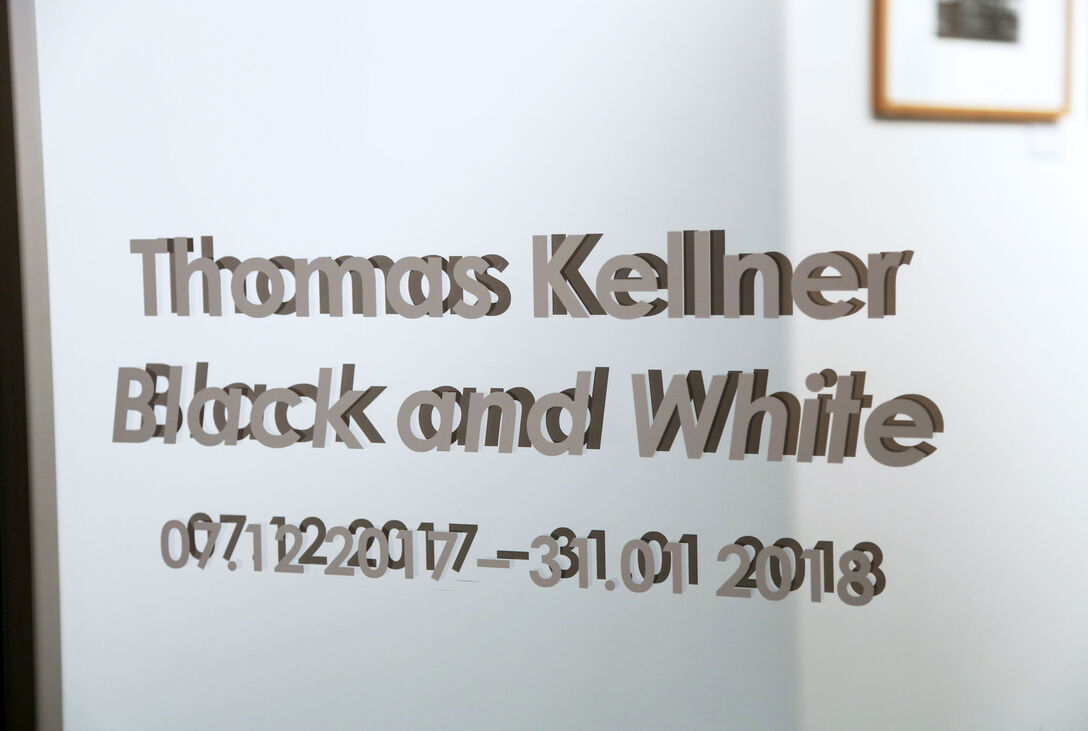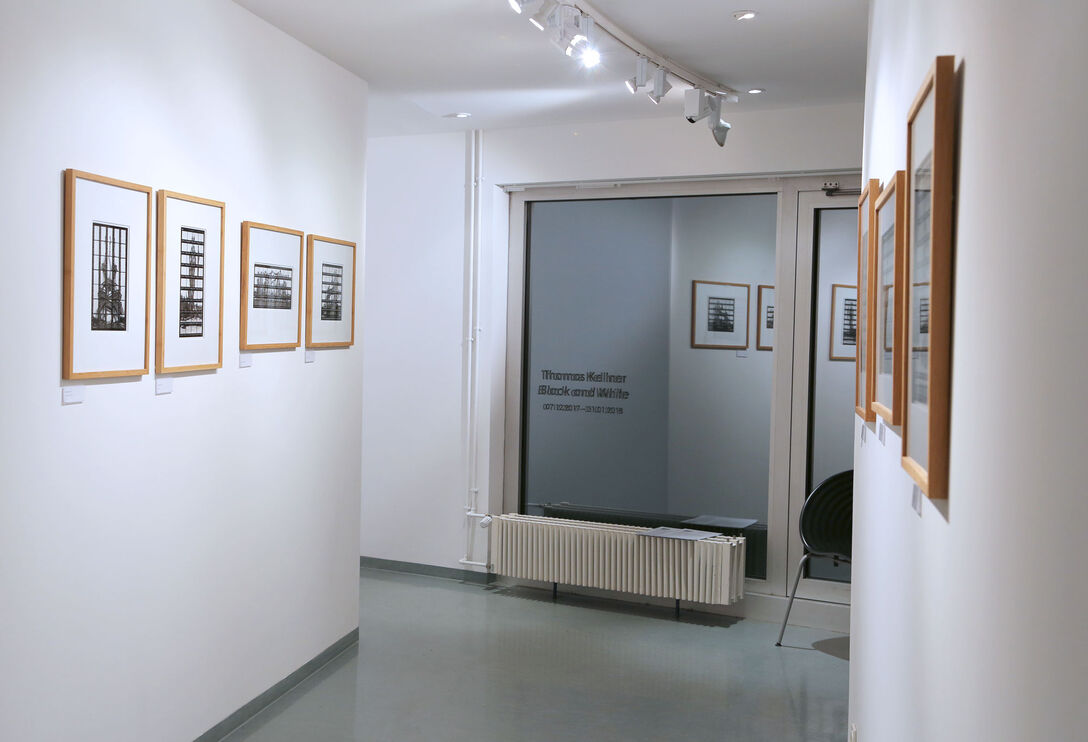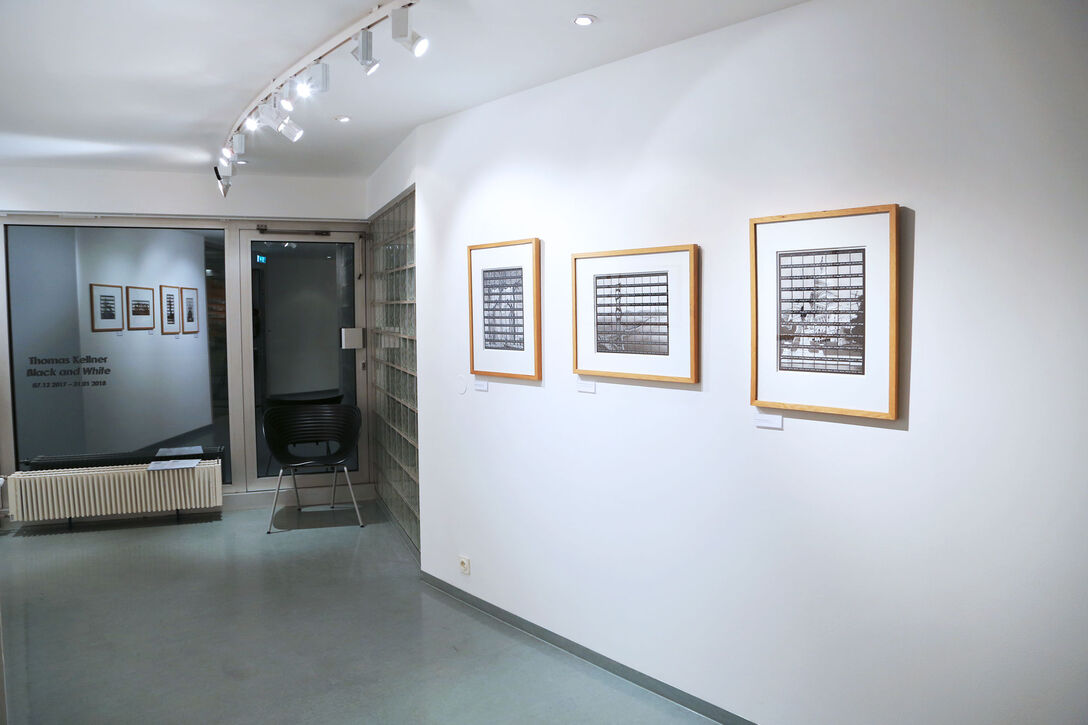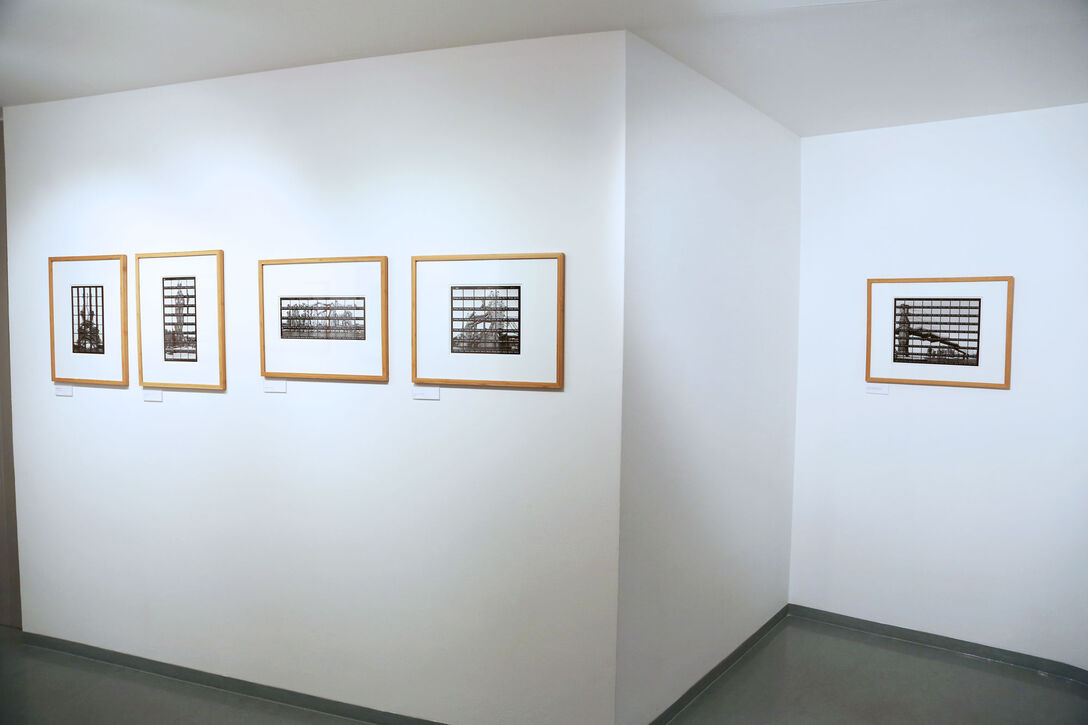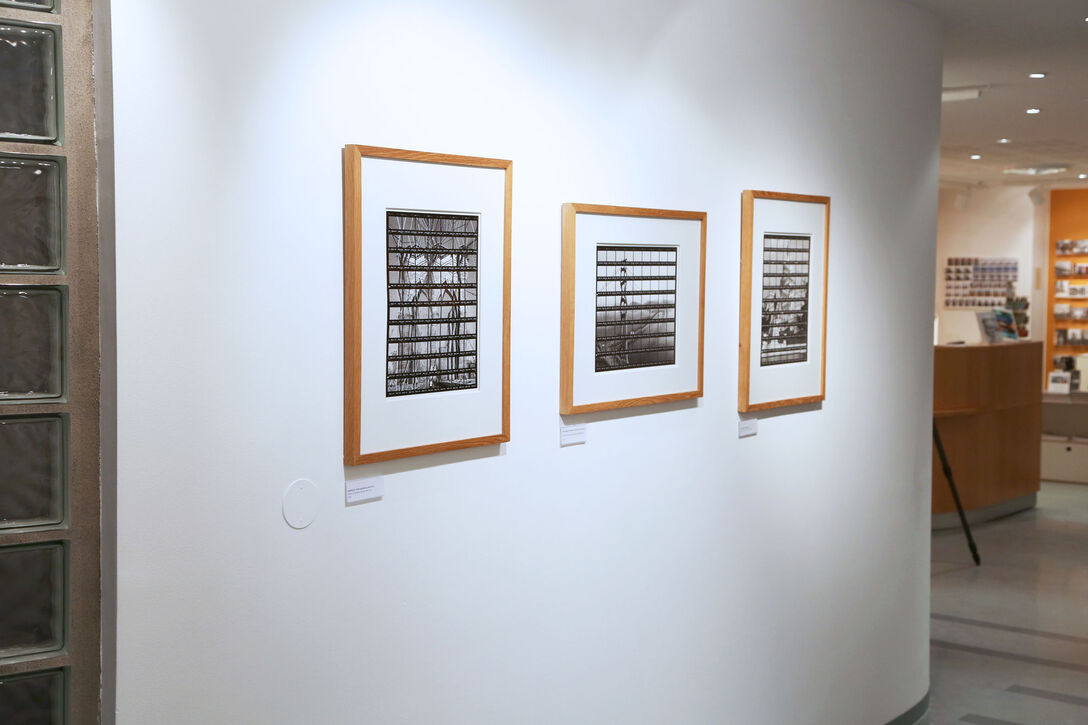

Black & White
December 7, 2017 - January 31, 2018
Reykjavik Museum of Photography, Reykjavik, Iceland
Contact: Íris Gyða Guðbjargardóttir iris.gyda.gudbjargardottir@reykjavik.is
Reykjavík Museum of Photography in Reykjavík City Museum
Grófarhús, Tryggvagata 15, 101 Reykjavík, ICELAND
www.photomuseum.is / www.borgarsogusafn.is
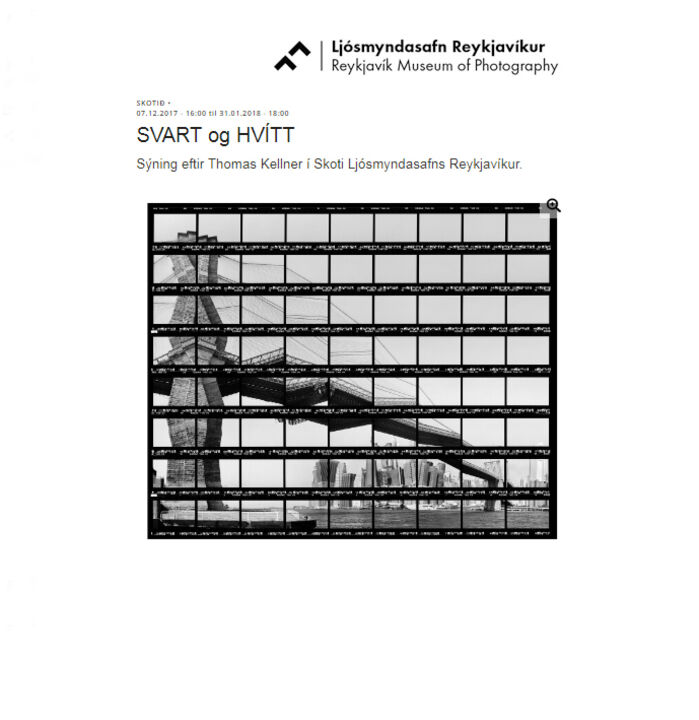
Zitat
“Kellner’s photographs do not mimic human vision any more than their more traditional counterparts, but their fragmented compositions create ¬something of the effect of human vision.” Pappas, Allison, Houston, we've had a problem! Kellner, Thomas, 2013, Seltmann+Söhne Berlin/Siegen, page 33
Thomas Kellner
Black and White
07.12 2017 – 31.01 2018
“Who would have thought that so much wonder could still be created with straight photographs in a time given to digital manipulation?” Alan G. Artner, Chicago Tribune
Starting in December 2017, the Reykjavik Museum of Photography will be presenting Thomas Kellner’s new exhibition “Black & White”. Silver gelatin tableaux made by Kellner between 1997 and 2005 will be on display. In this exhibition, Kellner recalls his beginnings as an artist and his roots in black-and-white photography using the analog gelatin silver process.
Black-and-white photography first became widespread in 1871 and developed into the first large-scale visual medium in cultural history. It was the dominant form of photography for almost 60 years before color photography was introduced. Those who have followed Kellner’s photography over the years know that most of his works have been published and exhibited in color. However, there was a time when Kellner worked in black and white.
In a time when many artists are returning to black-and-white photography, Thomas Kellner looks back on this period of his life. Even though most of his black-and-white works were never published, they do reflect his early career when he worked mostly in silver gelatin and experimented with cycles of various photographic images in the darkroom. Kellner ended up developing his unique visual language of multiple perspectives and the deconstructive approach whereby the composite image is either a multiple exposure on a negative or a sequence mounted on a contact sheet of 35-mm roll of film.
Starting with his first sketches of the Eiffel Tower as a homage to Robert Delaunay and Orphism (the French offshoot of cubism) in Paris in 1997, Kellner totally turned his attention from landscape to architecture and the growing complexity of his compositions. He creates ageless classic images in his newly invented visual language based on Cubism. In Kellner’s early black-and-white images, the observer can see how he focuses on the structure itself. The balance between the object and its visual form are at the center of his creations.
Kellner’s original concept was to create images with 36 exposures equaling one length of film. Later, he moved on to using two or more rolls. The exhibition will show iconic black-and-white images from San Francisco, NewYork City and Chicago for the first time. It also will have some larger scale works on show- for example, an impressive image of the Guggenheim Museum Bilbao.
On exhibit will be a selection of Kellner’s best black-and-white images to start on December 7, 2017 in Reykjavik. The presentation will be accompanied by a catalogue published by Seltmann+söhne, Lüdenscheid and Berlin including an essay by Harris Fogel.
ALL WELCOME
SVART og HVÍTT
Sýning eftir Thomas Kellner í Skoti Ljósmyndasafns Reykjavíkur.
Svart og hvítt / Black and White
Svart og hvítt / Black and white
“Hverjum hefði dottið í hug að enn yrðu teknar svo árifamiklar filmuljósmyndir á tímum stafrænnar byltingar?” Alan G. Artner, Chicago Tribune
Ljósmyndun í svarthvítu varð fyrst útbreidd um 1871 og náði hún fljótt miklum vinsældum. Svarthvíti myndheimurinn var allsráðandi áratugum saman eða allt þangað til að litljósmyndir komu til sögunnar. Kellner hefur mest megnis tekið og sýnt litljósmyndir, en um tíma tók hann svarthvítar ljósmyndir.
Í dag eru margir ljósmyndarar að enduruppgötva svarthvíta ljósmyndun og gera tilraunir með þann miðil. Í þessari sýningur horfir Kellner aftur til þess tíma þegar hann var að stíga sín fyrstu skref sem listamaður. Á upphafsárum ferilsins tók hann myndir á filmu og stækkaði þær á ljósmyndapappír. Hann þróaði sérstaka aðferð við framsetningu á verkum sínum, sitt eigið sjónræna tungumál. Með því að leggja 35 mm filmubúta samsíða á ljósnæman pappír skapaði hann eitt heildstætt verk samsett úr mörgum ljósmyndarömmum. Úr varð afbökuð mynd af viðfangsefninu.
Upphaf vinnu Kellners við ljósmyndaseríuna Black and White má rekja til verks af Eiffelturninum sem hann gerði árið 1997. Verkið vann hann í anda Roberts Delaunay´s sem var einn upphafsmanna orfisma, listastefnu sem spratt upp úr kúbisma. Í kjölfarið tók Kellner að einbeita sér í meira mæli að arkitektúr, verkin eru tímalaus og jafnvægi forms og viðfangs eru jafnframt í forgrunni í sköpunarferlinu.
Í upphafi var hugmyndin að hvert og eitt verk samanstæði af 36 römmum, eða einni 35 mm filmurúllu. Fljótlega tók Kellner þó að vinna með fleiri en eina filmu og stækkuðu verkin í samræmi við það. Verkin á sýningunni voru ekki sýnd eða gefin út á sínum tíma en hafa farið víða um heim undanfarin misseri.
Kellner býr og starfar í Siegen, Þýskalandi, hann er menntaður í félagsfræði, stjórnmálafræði, hagfræði, list og listasögu frá Háskólanum í Siegen. Verk Kellners hafa verið sýnd víða um heim, en einnig hefur hann unnið við sýningastjórnun, bókaútgáfu og haldið fyrirlestra.
catalogs

Kellner, T., Fogel, H. 2015, Black & White. Lüdenscheid/Berlin, seltmann+söhne. >>>

Mathieu, R., Viallon, R. 2016, Thomas Kellner. Contacts N & B 1997-2005. Lyon, Galerie Vrais Rêves. >>>
thank you to the whole team at Reykjavik Museum of Photography for showing my exhibition Black & White in Iceland. Thank you Íris Gyða Guðbjargardóttir, Helga Maureen Gylfadóttir, Guðrún Helga Stefánsdóttir, Sigríður Kristín Birnudóttir and a special thank you to my classmate Dieter Ney for a great time in summer 2017.
installation views
